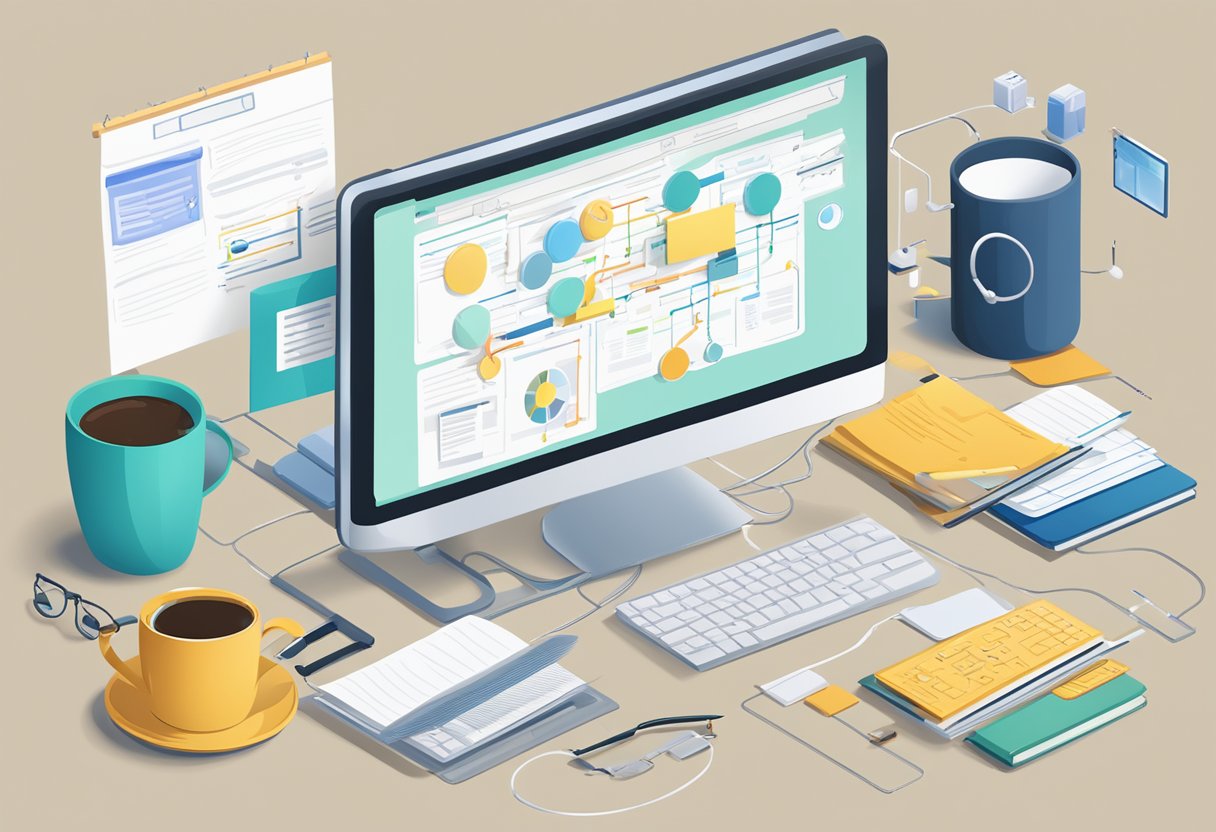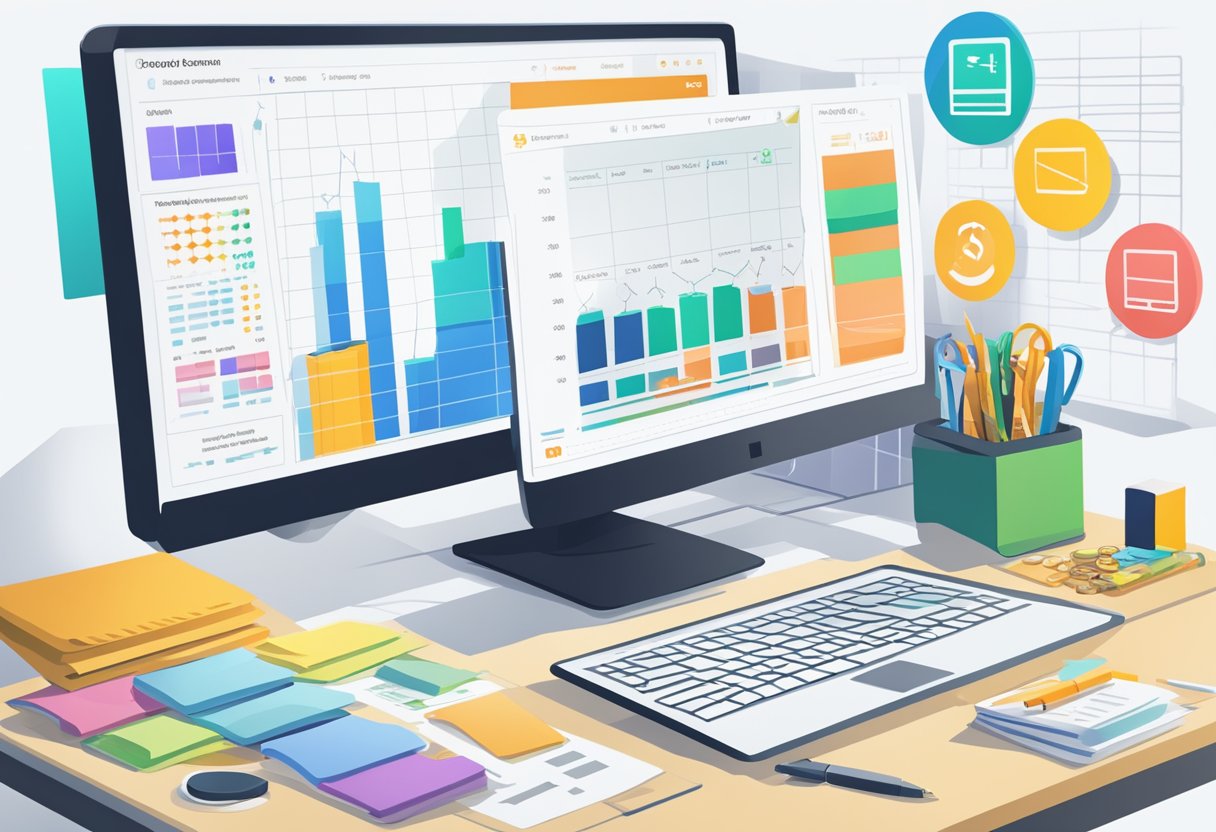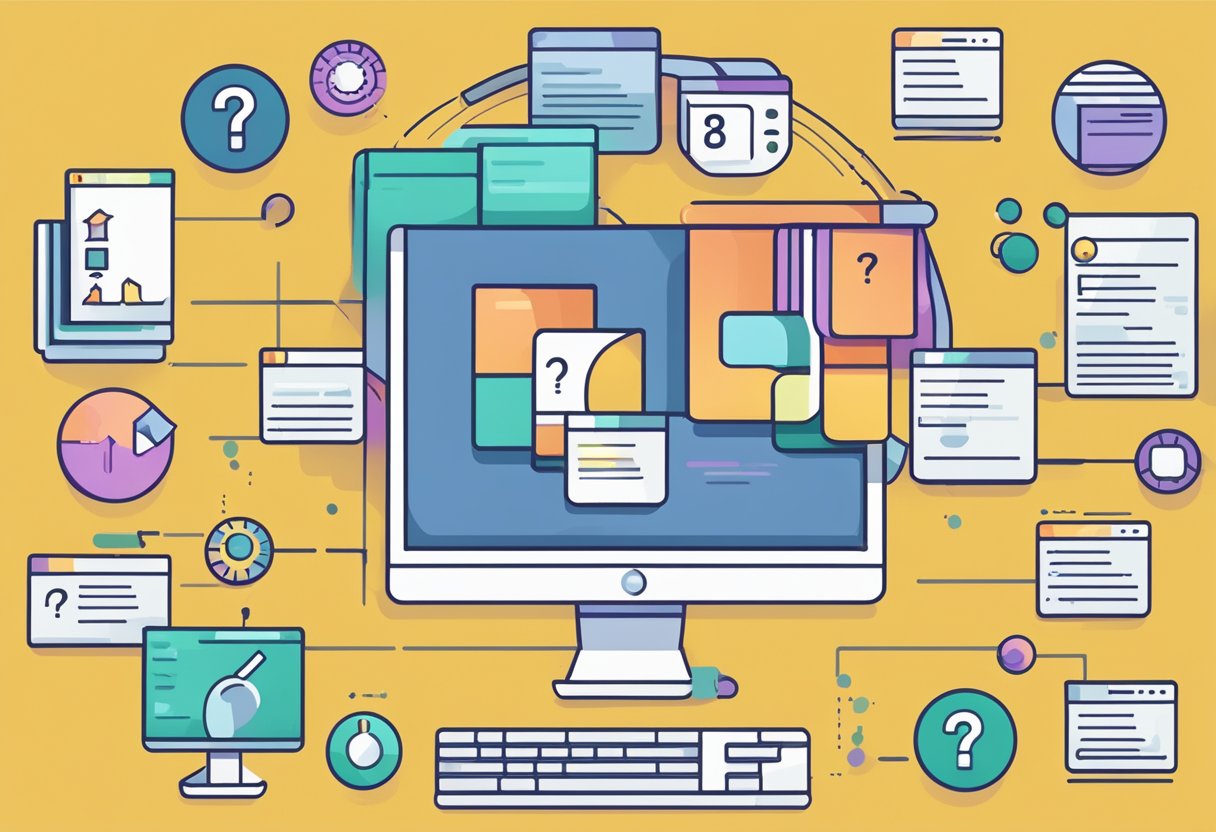Best Project Management Software: Top Solutions for Efficient Team Collaboration
Finding the right project management software can transform how teams work, making processes smoother and more efficient. The best project management tools in 2024 offer essential features, valuable integrations, and user-friendly interfaces that cater to diverse team needs. As project demands grow, these tools not only help in planning and execution but also enhance collaboration among team members.

With various options available, it is crucial to evaluate each platform based on its core functionalities, adaptability, and cost. Today’s project management software stands out by providing innovative features that keep teams organized and focused. As trends in project management evolve, selecting a platform that can adapt to changing requirements is vital for success.
Finding the right balance between usability and functionality will empower teams to achieve their goals. The following insights will guide readers through the landscape of project management software, highlighting key aspects to consider for their specific needs.
Key Takeaways
- Evaluating software based on features and usability can enhance team productivity.
- Popular platforms offer integrations that streamline communication and project tracking.
- Understanding pricing structures helps in selecting tools that fit any budget.
Evaluating Project Management Software
When choosing project management software, it’s essential to assess specific features and how well different tools meet user needs. An effective evaluation should focus on key functionalities, user experience, and the level of security.
Key Features to Consider
Several features are vital in an effective project management tool. First, task management is crucial. This includes creating, assigning, and tracking tasks efficiently.
User interface (UI) should be intuitive and easy to navigate. A good UI reduces the learning curve for new users.
Next, collaboration features like real-time messaging and file sharing help teams work together smoothly. Analytics and reporting tools must provide insights into project progress and team performance.
Finally, security features cannot be overlooked. Strong privacy controls and data encryption ensure that sensitive information is kept safe.
Software Comparison Methodology
To compare project management software, start by listing essential criteria. Capabilities should be examined first. Each software should support various project types and team sizes.
User feedback is another valuable factor. Reviews and ratings can provide clarity on real-world usage.
Conduct side-by-side analysis using key metrics. Create a comparison table highlighting features like ease of use, integrations, and mobile access.
It’s also helpful to consider pricing models and customer support options. This way, users can find software that meets their needs without exceeding budget constraints.
Core Functionalities
Project management software comes with several essential features that help teams manage their work effectively. Key functionalities include task management, resource management, time tracking, and budgeting. Each plays a vital role in ensuring projects run smoothly and efficiently.
Task Management
Task management is crucial in project management software. It allows users to create, assign, and monitor tasks easily. Users can break down projects into smaller tasks and set deadlines.
Most tools offer Gantt charts to visualize timelines and dependencies. This helps teams stay on track. Task tracking features often include progress indicators and priority levels.
Workflow automation is another key aspect. It reduces manual work by automating repetitive tasks. This increases efficiency and allows team members to focus on more critical aspects of their projects.
Resource Management
Effective resource management ensures that the right people and materials are allocated to the right tasks. Project management software provides tools for tracking team member availability.
Users can view workloads and avoid overallocation. Resource allocation charts help clarify who is working on what and when.
Some software also lets users manage physical resources, such as equipment and facilities. This comprehensive view helps optimize resource use, preventing delays.
Time Tracking
Time tracking features are vital for understanding how long tasks take and where time is spent. Most project management tools allow users to log hours spent on each task.
This data helps in analyzing productivity and identifying bottlenecks.
Some software includes built-in timers for real-time tracking. Others allow integration with external time tracking tools. Accurate time tracking helps with project scheduling and workload management.
Budgeting and Expense Tracking
Budgeting and expense tracking features ensure that projects stay within financial limits. Users can create budgets for each project and monitor spending against those budgets.
Many tools provide options for tracking expenses in detail. Teams can categorize costs, such as materials, labor, and overhead.
This information aids in making informed financial decisions and adjustments. Some software even includes reporting tools to analyze financial performance.
Through these functionalities, project management software supports comprehensive project planning and execution.
Collaboration and Communication
Effective collaboration and communication are vital for any project management software. These features help teams work together smoothly, stay updated on tasks, and share information effectively. Tools that enhance these aspects can significantly boost productivity and project success.
Real-Time Updates and Notifications
Real-time updates are essential for keeping teams informed about project progress. Software that offers instant notifications allows team members to react quickly to changes or issues. This minimizes delays in response and keeps everyone aligned with project goals.
For example, when a task is completed, a notification can alert the relevant team members. This keeps the workflow continuous and ensures that decision-makers have the latest information at their fingertips. Today’s tools, like Asana and Trello, excel at providing these updates, making real-time collaboration easier.
Integration with Collaboration Tools
Integration with existing collaboration tools is another crucial feature. Many software options allow seamless connections with popular applications like Slack or Microsoft Teams. This integration means teams can communicate without switching between platforms.
By linking project management software with communication apps, information flows more freely. Teams can discuss tasks directly where their work is happening. This reduces confusion and ensures that everyone is on the same page, streamlining workflows and relationship building among remote teams.
Teamwork and Sharing Capabilities
Teamwork features are important for ensuring all members can contribute their ideas and skills. Project management software should allow easy file sharing and version control, so everyone works from the most recent information.
Tools like Basecamp and ClickUp enable teams to assign tasks, share documents, and comment on project updates. This creates a shared workspace where input is valued and collaboration is encouraged. Effective sharing capabilities also enhance trust among team members, driving engagement and accountability, which are vital for project success.
Adaptability and Customization

Adaptability and customization are essential for effective project management software. These features allow users to tailor the tools to their specific needs. This flexibility can enhance productivity and improve team collaboration across various project types.
Workflow Customization
Many project management tools offer customizable workflows to meet unique project needs. Users can design workflows that match specific tasks and processes. This includes defining stages, setting deadlines, and assigning responsibilities.
Tools like ClickUp and Asana provide templates that can be adjusted to fit different projects. Users can create new templates or modify existing ones based on team requirements. Automation features allow teams to streamline repetitive tasks, reducing manual effort and saving time.
Scalability for Teams and Projects
Scalability is crucial for adapting project management software as teams grow or projects expand. Software that supports various team sizes provides flexibility for organizations. For instance, tools like monday.com are designed to accommodate small startups and large enterprises alike.
As project demands change, the software should easily adjust. This could mean adding users, increasing project limits, or introducing new features without disrupting existing workflows. A scalable solution can be a significant asset for organizations aiming for long-term growth.
Custom Reporting and Dashboards
Effective reporting is vital for monitoring progress and assessing performance. Many project management tools feature custom reporting options. Users can create reports that align with their specific goals, focusing on key metrics and project outcomes.
Dashboards allow teams to visualize their data effectively. Custom dashboards can display important information in real-time, enhancing decision-making. Users can select which widgets to display, tailoring the views to individual roles or needs. This capability ensures that all team members have access to the most relevant information.
Deployment and Integration

Successful deployment and integration of project management software is crucial for organizations. This includes the choice between cloud-based solutions and how well the software integrates with existing technology.
Cloud-based Solutions
Cloud-based project management software offers flexibility and accessibility. Teams can access their projects from anywhere with an internet connection. This is ideal for remote or hybrid work environments.
Many popular options, like Asana and ClickUp, utilize cloud infrastructure. These platforms require no installation, which reduces the setup burden for small businesses and enterprise companies alike.
Security is often a concern with cloud solutions. Reputable services employ strong encryption and are compliant with industry standards. This ensures safe handling of sensitive information.
Benefits of Cloud-based Solutions:
- Accessibility: Work from any device.
- Cost-effective: No need for additional hardware.
- Automatic updates: Always use the latest features.
Integration with Existing Tech Stack
Integration is key for efficiency. The software should work seamlessly with tools already in use, such as CRM systems or file storage services. This helps maintain workflows without disruption.
Popular project management tools like Zoho Projects and Trello offer various integrations. These can automate tasks and reduce manual data entry, which saves time.
When selecting software, it’s important to review available integrations. Each business’s tech stack is unique. Some may need more extensive linking with third-party applications. This can especially benefit larger teams or organizations with complex requirements.
Considerations for Integration:
- APIs available: Check if the software has APIs for custom needs.
- Pre-built integrations: Look for software that readily integrates with popular tools.
- Documentation support: Good documentation simplifies the integration process.
Popular Project Management Platforms
Project management software helps teams organize work, prioritize tasks, and track progress. Many platforms cater to different needs, from simple task lists to complex project tracking tools. This section highlights some of the leading solutions and emerging apps in the field.
Overview of Leading Solutions
Many popular project management platforms offer various features tailored to team requirements.
-
Monday.com: Known for its user-friendly interface and versatility, it helps teams visualize workflows easily.
-
Asana: This tool excels in task management and is suitable for both small and large teams. It offers numerous templates and integrations.
-
ClickUp: This platform provides robust features for remote collaboration and project templates. It suits agile development teams.
-
Trello: Using boards and cards, Trello simplifies task management and is ideal for visual planners.
-
Wrike: This tool offers features for resource management and reporting, making it great for larger projects.
-
Microsoft Project: A traditional choice, it offers advanced project planning tools for experienced users.
These established platforms provide a range of functionalities to suit various team sizes and project complexities.
Emerging Project Management Apps
Alongside well-known names, several emerging apps are making an impact in project management.
-
Notion: Blending note-taking and project management, Notion allows users to customize their workspace.
-
Airtable: A flexible database tool, it combines spreadsheet features with project management capabilities, appealing to data-driven teams.
-
Smartsheet: This platform offers a familiar spreadsheet layout while incorporating robust project tracking and automation features.
-
Basecamp: Focusing on simplicity, Basecamp helps teams communicate effectively and manage projects without overwhelming features.
-
LiquidPlanner: Known for its predictive scheduling, it allows teams to think ahead and plan based on dynamic resource availability.
-
Zoho Projects: A cost-effective option for small teams, it includes task management and time tracking features.
These emerging apps provide new perspectives and tools, catering to diverse needs in the ever-evolving project management landscape.
Pricing and Affordability

When considering project management software, pricing and affordability are key factors. Various options exist, from free tools to premium plans. Understanding cost structures can help users find the right solution for their needs.
Understanding the Cost of Software
Most project management tools offer a range of pricing plans. For small to midsized businesses, the cost typically ranges from free to $20 per user per month.
| Software | Price Range | Target Users |
|---|---|---|
| Asana | Free to $20/user/month | Small to midsized |
| ClickUp | Free to $19/user/month | Small to large |
| Trello | Free with premium options | Small |
| Monday.com | Starting at $10/user/month | Small to midsized |
It’s important to note that pricing can vary based on features, such as storage and user limits. Some software might offer advanced features for higher tiers.
Free Plans and Trial Offers
Many project management tools provide free plans, which are useful for individuals or small teams. Trello is a popular choice for those who need basic functionalities without cost.
Trial offers are also common. For example, Asana and ClickUp often provide 14-day free trials of their premium features. This allows users to assess whether the software meets their needs before committing.
Taking advantage of free plans and trials can help businesses find the best fit without initial investment. Always review the limitations of free versions, as they may not include essential features needed for larger teams.
Security and Compliance
In project management software, security and compliance are vital. They ensure the safety of sensitive data and adherence to laws that protect user privacy. Understanding these aspects helps in choosing the right software that meets specific needs.
Ensuring Data Security
Data security is crucial for protecting against threats and unauthorized access. Effective project management software incorporates multiple layers of security measures. These include:
-
Encryption: Data is often encrypted both in transit and at rest. This means that even if data is intercepted, it remains unreadable without the proper decryption keys.
-
Access Controls: Role-based access controls help restrict information to authorized users only. This minimizes the risk of data breaches by limiting exposure.
-
Regular Audits and Monitoring: Many tools provide security audits and continuous monitoring to detect suspicious activities. This proactive approach helps in identifying vulnerabilities before they are exploited.
Investing in software with robust data security capabilities is essential for safeguarding project information.
Compliance with Regulations
Compliance is about following industry-specific laws and standards. Project management software must adhere to various regulations such as GDPR, HIPAA, and CCPA. Key compliance factors include:
-
Data Handling Practices: Software should implement clear protocols for collecting, storing, and processing personal data. This includes obtaining user consent and providing data access rights.
-
Regular Updates and Training: Compliance requirements frequently change. Software vendors must offer regular updates and provide training for users to stay informed on best practices.
-
Audit Trails: Tools should maintain comprehensive records of user actions. Audit trails provide accountability and transparency, showing how data is accessed and modified.
Choosing software that ensures compliance protects organizations from legal issues and builds trust with users.
Support and Resources
Access to support and resources is crucial for effective project management software. Strong customer support can help business owners resolve issues quickly, while educational resources can enhance team skills and collaboration.
Customer Support Services
Most project management software offers various customer support services. This includes:
- Live Chat: Available during business hours for immediate assistance.
- Email Support: Users can send queries and receive detailed responses.
- Phone Support: Some providers offer direct phone lines for urgent issues.
Support teams are trained to assist with software functionalities, troubleshoot problems, and offer advice on best practices. Additionally, many platforms provide a dedicated account manager for larger teams. Great customer support ensures that teamwork remains uninterrupted, enhancing overall productivity.
Educational and Training Resources
Educational resources are essential for maximizing the use of project management software. Providers usually offer:
- Webinars: Live or recorded sessions covering specific features and strategies.
- Tutorials: Step-by-step guides available on the website or help center.
- Knowledge Base: A collection of articles and FAQs addressing common questions.
These resources help users, including team members and business owners, gain confidence and proficiency in the software. Educational institutions may also leverage these materials to enhance learning in project management courses. Access to comprehensive training ensures teams can work more effectively and collaboratively.
Industry-Specific Applications
Different industries often have unique needs for project management. This section looks at software tailored for agile methods and tools suited for waterfall and hybrid models, each addressing specific challenges in project management.
Software for Agile Methodology
Agile software development focuses on flexibility and collaboration. Tools designed for this methodology prioritize features like Kanban boards, backlog management, and sprint planning.
Popular options include:
- ClickUp: Offers customization and integrates various tools for seamless workflow.
- Asana: Excels at task assignments and progress tracking, ideal for agile teams.
These platforms support rapid iteration and adaptability, allowing teams to respond quickly to changes. They also provide features for risk management and dependency tracking, ensuring that potential issues are addressed in real-time.
Tools for Waterfall and Hybrid Models
Waterfall project management follows a linear path where each phase must be completed before the next begins. Tools for this methodology typically include comprehensive features for planning and documentation.
Key options are:
- Microsoft Project: Great for managing large teams and complex projects with extensive resource management features.
- Smartsheet: Known for its ability to handle project portfolios, making it suitable for organizations with multiple concurrent projects.
Hybrid models combine agile and waterfall approaches, allowing flexibility. Software for hybrid methods often includes features like portfolio management tools to provide a complete overview, assist in risk assessment, and manage dependencies effectively.
Trends and Innovations
Project management is evolving quickly, with new trends and innovations shaping how teams work together. This section discusses two significant areas: future forecasting and the role of AI and machine learning in project management.
Forecasting the Future of Project Management
In 2024, many project management tools will focus on optimizing resources and enhancing scheduling. Teams will also lean toward all-in-one workspaces that combine multiple functions into one platform.
This shift allows for better collaboration and streamlined processes. According to recent reports, organizations are prioritizing tools that offer effective data visualization. This helps teams track progress in real-time and make informed decisions.
Also, over 81% of professionals believe that recent advancements, particularly in AI and analytics, are changing how they manage projects. As these trends continue, the emphasis on flexibility and adaptability in project management software is expected to grow.
Incorporating AI and Machine Learning
AI and machine learning are becoming central to project management innovations. These technologies help analyze data patterns and predict project outcomes more accurately. By integrating AI, tools can automate routine tasks, freeing up time for team members to focus on more critical activities.
Forbes Advisor highlights that predictive analytics in project management software is on the rise. With AI, teams can identify risks earlier and adjust their plans accordingly. Moreover, generative AI tools can create project plans and timelines based on historical data, leading to better resource allocation.
As these technologies mature, project management apps will increasingly support collaborative efforts, ensuring that all team members stay aligned and engaged.
Conclusion
Choosing the right project management software is vital for any organization. The best solutions help teams reach their goals efficiently and effectively.
When evaluating project management apps, it’s important to consider their features. A good tool should improve processes and foster better organization.
Key factors to keep in mind include:
- User Interface: It should be simple and easy to navigate.
- Collaboration Tools: Real-time features help teams stay connected.
- Task Management: Effective tracking keeps projects on schedule.
- Reporting: Provides insights into productivity and performance.
Many project managers find success with tools like ClickUp and Asana. These solutions fit well with different types of teams.
Teams focused on large projects may prefer Wrike or Microsoft Project. Their robust features can scale as needed.
In the end, the right project management software increases productivity and enhances teamwork. It empowers teams to work smarter and achieve their objectives more easily.
Frequently Asked Questions

This section addresses common inquiries about project management software. It covers essential features to seek, evaluation methods, popular free tools, and criteria used by experts.
What features should I look for in project management software for small teams?
Small teams should prioritize software that offers task tracking, collaboration tools, and easy onboarding. Features like file sharing, time tracking, and integrated communication can significantly enhance productivity.
How does one evaluate the best project management tools for individual use?
Evaluating individual tools involves assessing usability and available features. A user should focus on tools that support personal organization, task prioritization, and goal tracking, as well as those that provide clear visual interfaces.
Which free project management tools are preferred by professionals?
Professionals often favor tools like Trello, Asana, and ClickUp for their robust features in free versions. These tools offer options for task management, collaboration, and project visualization without requiring payment.
Can you list the top project management solutions suitable for handling multiple projects simultaneously?
Solutions like ClickUp, Trello, and Monday.com are well-suited for managing multiple projects. They provide features such as project timelines, task dependencies, and resource allocation, allowing teams to oversee various tasks efficiently.
What criteria are used by experts to judge the efficacy of project management software?
Experts typically evaluate software based on usability, features, integration capabilities, and customer support. Performance tracking, reporting tools, and flexibility for scaling projects are also essential factors in the assessment.
How does Microsoft Project stand against other popular project management software?
Microsoft Project is renowned for its detailed planning and resource management features. While it offers strong capabilities for complex projects, its learning curve can be steeper compared to more user-friendly options like ClickUp and Trello.




Post Comment